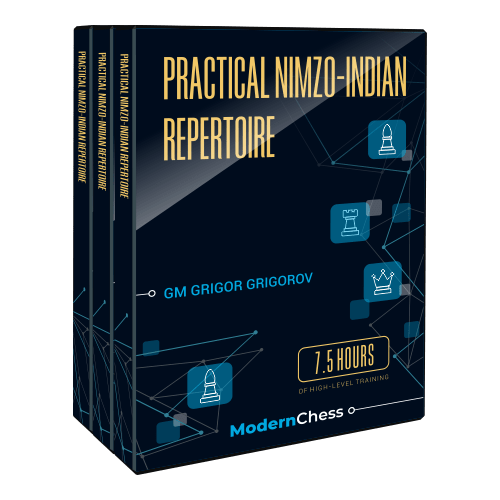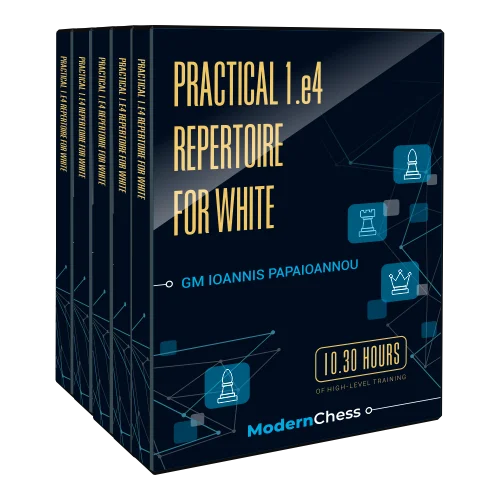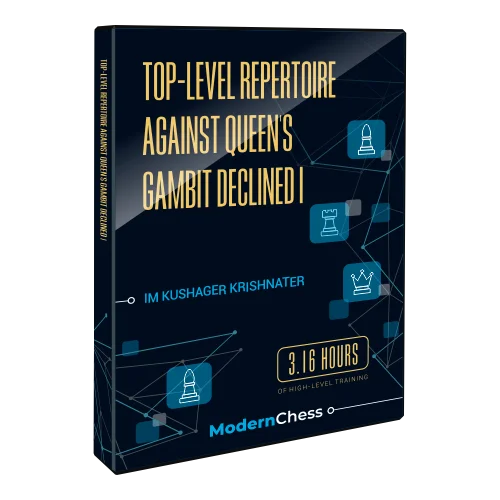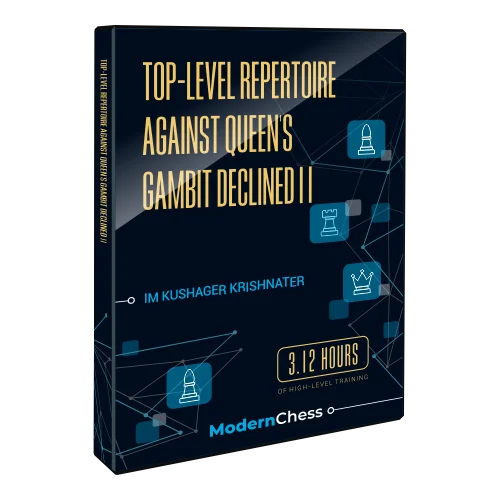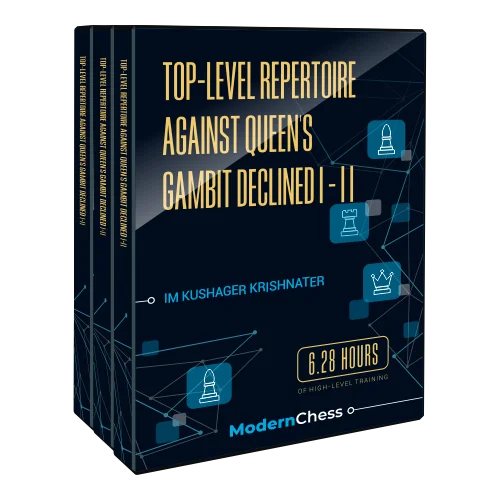We are happy to introduce to you the new course by GM Grigor Grigorov - Practical Nimzo-Indian Repertoire. This product includes all the videos from the workshop as well as the PGN file related to the training sessions. Overall, the material consists of 7.5 hours of video and a PGN database which includes 74 files.
We are happy to introduce to you the new course by GM Grigor Grigorov – Practical Nimzo-Indian Repertoire.
This product includes all the videos from the workshop as well as the PGN file related to the training sessions. Overall, the material consists of 7.5 hours of video and a PGN database which includes 74 files.
Preview by the Author:
The main position of the Nimzo-Indian Defence arises after 1.d4 Nf6 2.c4 e6 3.Nc3 Bb4
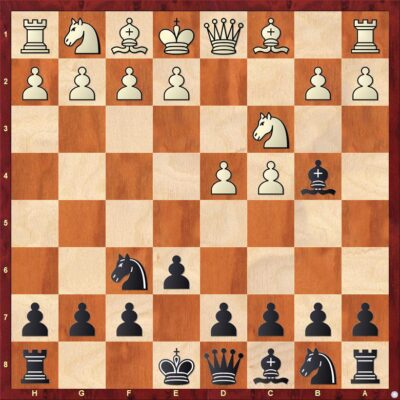
I started playing the Nimzo-Indian Defence when I was a kid. Even nowadays, however, I consider it one of the most (if not the most) sound and reliable chess openings. It’s not a surprise that every top-level has the Nimzo-Indian Defence in his repertoire. One of the beauties of this fundamental opening is that you can play it in many ways. Every player can adjust it to his own style and chess philosophy. As an experienced trainer I have seen that when we work on a classical opening like Nimzo-Indian Defence, we improve our general chess understanding.
Given the above considerations, I have decided to make a special camp dedicated to my favorite opening. Working on the preparation was both exciting and challenging. It was not difficult to find well-playable and theoretically justified variations. In Nimzo-Indian Defence, you can find them everywhere. The main challenge was to build a consistent repertoire. It means that the selected variations should be based on similar structures, ideas, and patterns. In this way, the repertoire becomes more practical and easy to learn. The vast majority of the suggestions in this course are based on my own repertoire. In the material, you will find the following recurring patterns:
1) We play 4…c5 against everything except 4.a3
2) We gladly enter positions with doubled pawns by means of …Bxc3
3) In most of the lines we prioritize static advantages
4) Very often we go for Hedgehog type of position
5) Rather than going for sharp lines we choose systems based on understanding
If you share these key 5 points, you can join our Nimzo-Indian journey!
Now, I will briefly present each one of the five lectures.
What you’ll learn:
Systems with Doubled Pawns on c3 and c4
In the first part of the course, we pay closer attention to the positions with doubled pawns arising after …Bxc3. More specifically, in this lecture, we examine 4.a3, and 4.Bg5. Note that we will get doubled pawns in other lines as well – 4.Nf3 and 4.e3. For didactic reasons, these lines are covered in other lectures. Let’s draw the general picture of this first lecture.
1.d4 Nf6 2.c4 e6 3.Nc3 Bb4 4.a3 This is the so-called Saemisch Variation. The vast majority of the examples in this first lecture are dedicated to the move 4.a3. I am sure that by studying this line, you will improve your general understanding of the positions with doubled pawns.
In this lecture, I also examine the Leningrad System arising after 4.Bg5 In this case, I prefer the following move order 4…c5 5.d5 h6 Clarifying the position of the g5-bishop is a recurring motif in Nimzo-Indian Defence. The main tabiya of the variation arises after 6.Bh4 Bxc3 7.bxc3 d6 8.e3
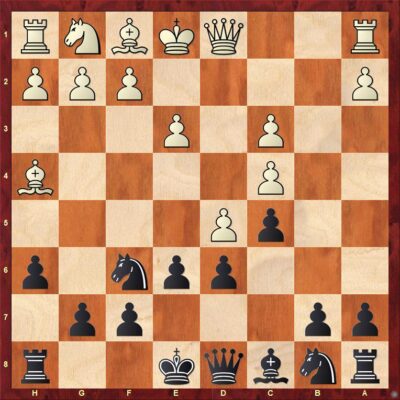
For the time being, White does not clarify the position of his knight. If Black goes for …e6-e5, White’s main strategy is based on Bd3 and Ne2. Afterward, he can start expanding on the kingside. Even though the common 8… e5 is completely playable, I prefer starting with 8…Qe7!?
The idea of this tricky move order is to keep the e5-square available for the knight. For instance, the setup based on Bd3 followed by Ne2 is very well met by the maneuver…Nd7-e5. We play …e6-e5 only in response to Nf3. In the lecture, I provide several model games that illustrate the must-know ideas in the arising structures.
The first important tabiya of the Saemisch Variation arises after 4…Bxc3 5.bxc3
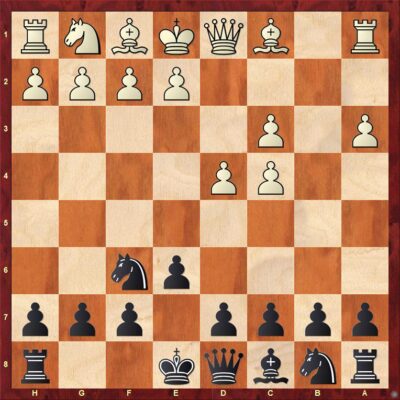
White hopes that his powerful pawn center and bishop pair will compensate for the inferior pawn structure. Note that here the move order is very important. When choosing our setup, we should keep in mind that White’s dream attacking construction is f2-f3, e2-e4, and Bd3 followed by Ne2. The most precise move order for Black is 5…c5
As we will see in a while, putting immediate pressure on d4 is Black’s best strategy. White has two options – the straightforward f2-f3 and the cautious e2-e3. The point of Black’s move order can be seen after 6.f3 Nc6 7.e4 d6
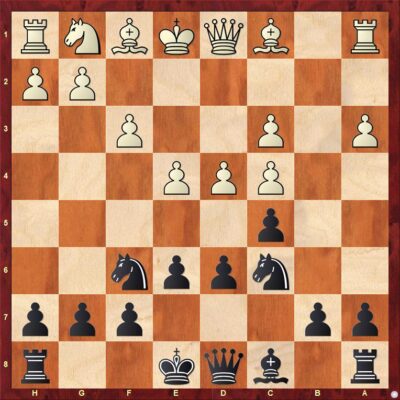
The pressure on d4 prevents White from playing Bd3 followed by Ne2. At this point, I examine several moves that White might try – 8.Be3, 8.Ne2, 8.Nh3, and 8.d5. In my comments on the model games, you will find detailed explanations of the important tactical, positional, and theoretical ideas. You will also see, what is the right way of playing against White’s doubled pawns.
Against 6.e3, the most precise move order is 6…b6 7.Bd3 Bb7!
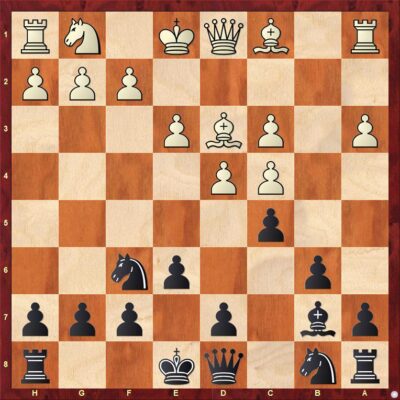
Besides provoking f2-f3 and preventing White from playing f2-f4 in one go, the b7-bishop takes the control of the e4-square. A bit later, this subtlety will become very important. The logical follow-up is 8.f3 Nc6 9.Ne2 0-0 10.e4 Ne8!
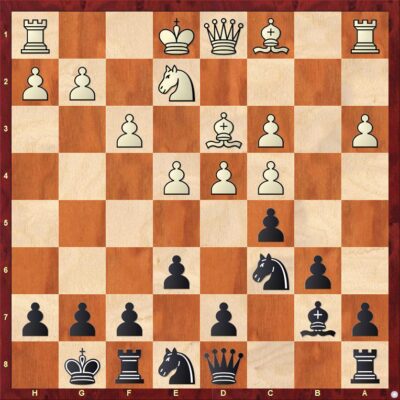
Remember, the advance e3-e4 should always be met with this move. Otherwise, the pin created by Bg5 is really annoying. Another important rule is to answer f3-f4 with …f7-f5. Now, it becomes clear that the control of the e4-square is not without importance. If White makes passive moves, Black can start playing against the c4-pawn by means of standard moves such as … Na5 and …Rc8. Very often, the move …Nd6 comes into consideration. In the model games, you will find all the important ideas in this type of position.
The PGN version of this lecture consists of 17 extensively annotated model games.
Practical Solution against 4.Qc2
In this lecture, we deal with one of the most critical systems against the Nimzo-Indian Defence arising after 1.d4 Nf6 2.c4 e6 3.Nc3 Bb4 4.Qc2
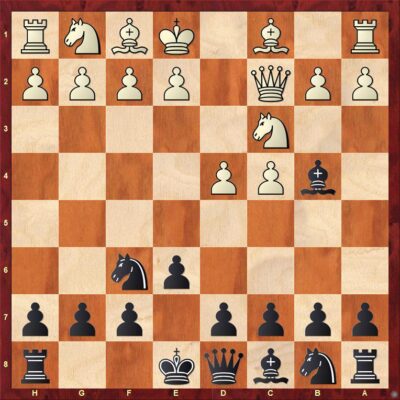
Besides preventing Black from doubling the pawns with …Bxc3+, White takes the control of the important e4-square. In many lines, he is ready to execute the advance e2-e4. On the downside, White’s last move does not contribute to the development. Additionally, Black can now try to use the vulnerability of the d4-square. Also against this line, I suggest 4…c5 immediately attacking the vulnerable d4-spot. The first important tabiya arises after 5.dxc5 0-0
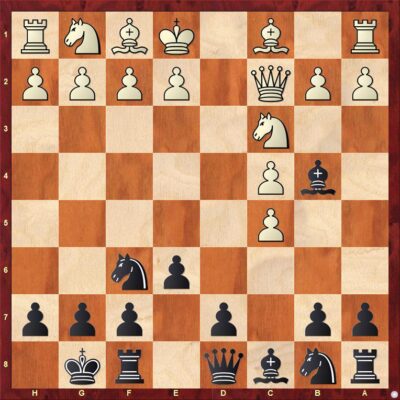
Obviously, Black will regain the c5-pawn. If allowed, we will do it by means of the maneuver…Na6-Nxc5. Taking with the knight is desirable since in this case, Black has better control of the center. Nevertheless, the immediate 5…Na6 is dubious in view of 6.a3 Bxc3 7.Qxc3 Nxc5 8.b4 Nce4 9.Qd4 when the threat of f2-f3 is very annoying. Therefore, we mostly play …Na6 when White goes for Nf3. The main move in this position is 6.a3 forcing Black to take on c5 with the bishop. I also examine 6.Nf3 and 6.Bf4.
The most important position of the variation arises after 6…Bxc5 7.Nf3 b6
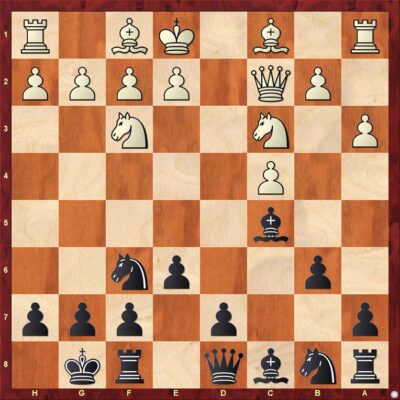
This is the main tabiya of our repertoire against 4.Qc2. In this position, White has two systems of development:
1) Setups based on Bg5
2) Setups based on Bf4
Usually, when White goes for Bg5, we play in the Hedgehog style. Standard moves in that direction are …Bb7, …Bb7, …a7-a6, and …d7-d6. You can play this setup without knowing too much of a theory.
On the other hand, the setups with Bf4 are usually more active and require dynamic play for Black. For instance, if White goes for an aggressive setup based on Bf4, Rd1, and e2-e4, Black is advised to prioritize the development of his queenside. The usual way of developing the queenside pieces, in this case, is …Bb7 followed by …Nc6, and …Rc8. On the other hand, after neutralizing White’s temporary activity, Black can again settle for a Hedgehog type of play. Obviously, these are only general remarks. In the model games, you will see that our move orders and setups will vary depending on White’s exact variation.
The PGN version of this lecture consists of 12 extensively annotated games.
Systems with g2-g3
The starting position of this lecture is reached after 1.d4 Nf6 2.c4 e6 3.Nc3 Bb4 4.Nf3 c5 5.g3

This variation is popular in high-level games. By putting his bishop on g2, White is planning to exercise long-term Catalan pressure. In order to achieve this goal, he is ready to accept certain structural weaknesses. My favorite system against this line is 5…cxd4 6.Nxd4 Ne4
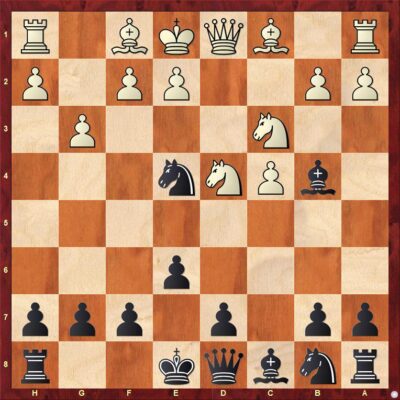
By putting additional pressure on c3, Black provokes the early sortie of the white queen. White’s most popular move in this position is 7.Qd3.
Nowadays, however, the alternative 7.Qc2 is getting increasingly popular. In this case, my suggestion is 7…Nxc3 8.bxc3 Be7
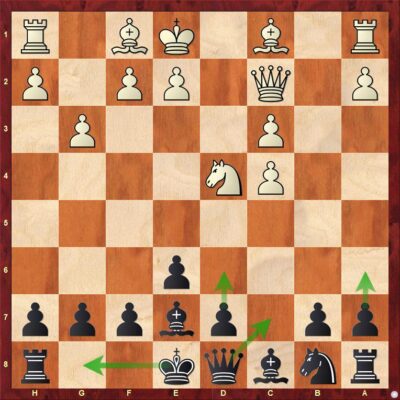
I like this setup for Black. We are ready to play against White’s structural weaknesses by means of simple moves such as …0-0, …a7-a6, …d7-d6, and …Qc7. Objectively, White has enough compensation for his inferior structure. What I like about this type of position, however, is that White should play very dynamically in order to compensate for his static problems. In such cases, humans are prone to making mistakes.
After 7.Qd3, our main line goes 7…Bxc3+ 8.bxc3 Nc5
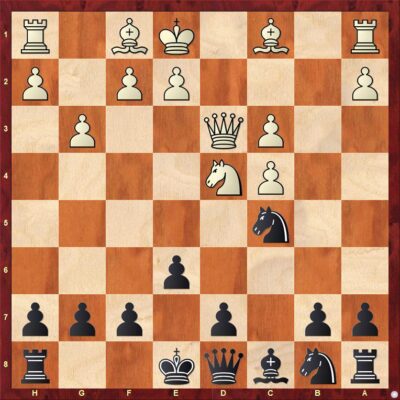
This move is the reason why we wanted to provoke Qd3. Black’s entire strategy will be focused on exploiting the vulnerable doubled pawns in White’s camp. Against pretty much everything, except 9.Qf3, we are ready to follow with …b7-b6 and …Bb7. Against 9.Qf3, our setup will be based on …d7-d6 followed by …e6-e5. Once again, the arising positions are complex and balanced. Nevertheless, given the fact that White must play very energetically, Black’s job is easier from a practical perspective.
The PGN version of this lecture consists of 14 extensively annotated model games.
How to Play against 4.e3
This lecture is dedicated to one of White’s most popular antidotes against the Nimzo-Indian Defence – the Rubinstein Variation. This system arises after 1.d4 Nf6 2.c4 e6 3.Nc3 Bb4 4.e3
Being consistent with the remaining part of our repertoire, our move is again 4…c5
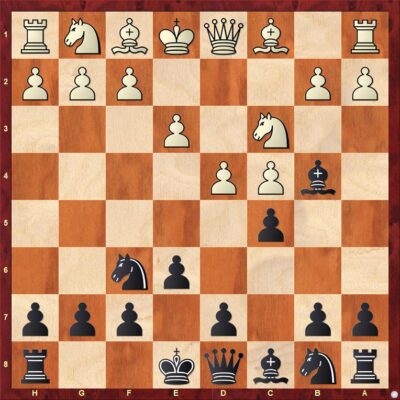
An additional benefit of this move order is that in the case of 5.a3 Bxc3 6.bxc3 b6, we transpose to a position that is dealt with in the first lecture. Traditionally, White’s most popular move is 5.Nf3 planning to complete the development of the kingside with natural moves such as Bd3 and 0-0. Now, Black can go for the so-called Huebner Variation that will be our main weapon.
I also examine 5.Bd3 0-0 6.Nge2 cxd4 7.exd4 d5
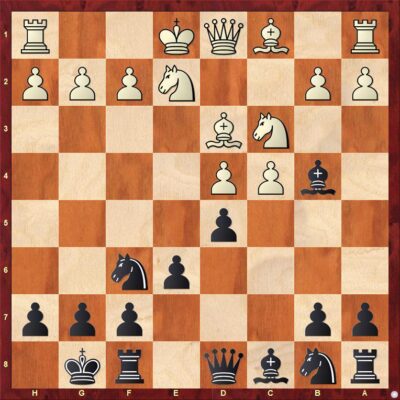
Since White has developed his knight on e2 it makes sense to opt for the IQP structure. When playing with an isolated pawn, White usually prefers to have a knight on f3, so that the active Ne5 could be possible. Note that for the time being we delay the natural …Nc6. As you will see in my analysis, sometimes Black prefers developing the knight via d7. In general, we have nothing to worry about in this system.
Another important continuation is 5.Nge2. White is ready to chase the bishop away by means of a2-a3. The idea is to grab the bishop pair without spoiling the pawn structure. On the other hand, the move 5.Nge2 hinders the development of the kingside. My suggestion against this system is 5…d5 6.a3 Ba5!
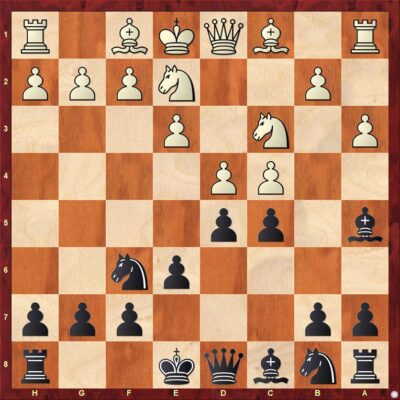
This is the entire point of our variation. Black wants to obtain a favorable version of IQP without parting with the bishop pair. Another point is to answer 7.dxc5 with 7…dxc4. When the white knight leaves the e2-square, Black can already consider taking on c3. I think that 6…Ba5 will become the main line.
The first important tabiya of the Huebner Variation arises after 5.Nf3 Nc6 6.Bd3 0-0 7.0-0 Bxc3 8.bxc3 d6
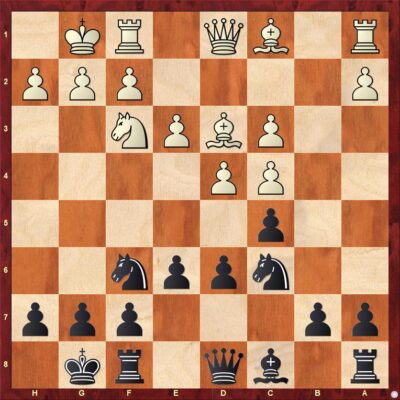
After parting with his dark-squared bishop, Black is ready to put his central pawns on dark squares. His next move is going to be …e6-e5. The arising positions are very strategic. Therefore, knowing the typical plans and ideas is much more important than memorizing concrete theory. After studying the material, you will get a deeper understanding of closed positions. In this line, I found some new ideas and concepts. Based on my work, I can say that the Huebner System is a reliable weapon that can be used at any level.
The PGN version of this lecture consists of 15 extensively annotated model games.
Fighting the Rare Lines
Despite its title, the last lecture is not entirely focused on rare systems since the vast majority of the examples feature the variation 1.d4 Nf6 2.c4 e6 3.Nc3 Bb4 4.f3
This aggressive and ambitious variation is very popular in grandmaster practice. Just like in the system with 4.a3, White is planning to build a strong pawn center with e2-e4.
In this lecture, I also cover 4.Bd2 and 4.Qb3 which are quite harmless. In both cases, we follow with … c7-c5. Even though I provide concrete lines, knowing the exact theory is not that important for Black. Very often, in these lines, Black gets a favorable version of the structures arising in the line with 4.Qc2 c5. I advise you not to study these 2 variations in depth. Knowing the basic ideas and setups is more than enough to play with confidence.
Against 4.f3, my suggestion is again 4…c5
The first important crossroads arises after 5.d5 b5 6.e4 d6
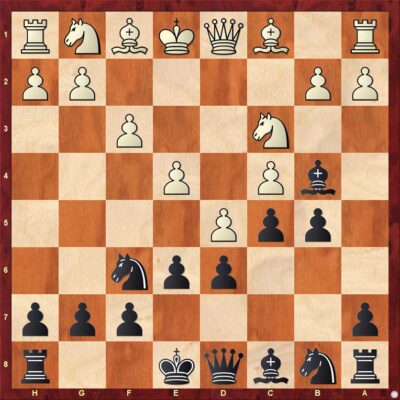
Now, White faces some choice. He should decide how to develop the kingside pieces. In the first model games, I proved that the natural development based on Bd3 and Ne2 does not work well since it’s time-consuming. White can also try to improve this idea by starting with 7.a3. Nevertheless, Black has decent play in this case as well. Neglecting the kingside development with 7.Bg5 is also very risky. Black usually goes for a Benoni type of structure which provides him with a wide range of dynamic possibilities. Putting pressure on d6 with dxe6 followed by Bf4 is also not enough. Black’s superior development gives him enough compensation. The most logical continuation is 7.Nge2.
Another move which is popular on the highest level is 7.Bd2 By creating the threat of Nxb5, White tries to force Black to release the queenside tension. I prove that the Benoni structure arising after 7…Bxc3 8.Bxc3 b4 9.Bd2 exd5 10.cxd5 0-0 is quite acceptable for Black.
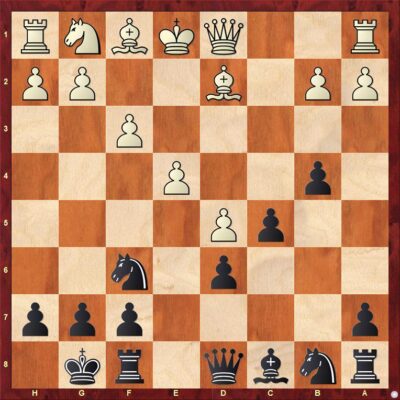
The lack of the powerful dark-squared bishop is compensated by Black’s superior development. In this structure, our counterplay is based on the advance …f7-f5.
Now, let’s get back to the position after 7.Nge2. The most important position is being reached after 7…bxc4 8.Nf4
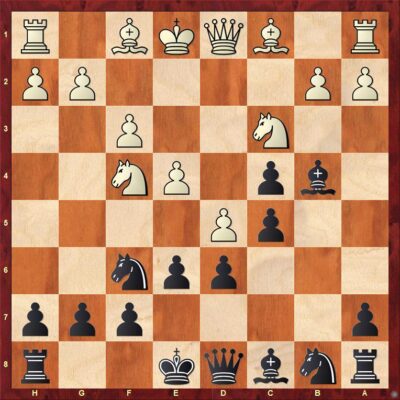
This is one of the most important positions of the variation with 4.f3. By putting pressure on e6, White wants to provoke the advance …e6-e5. When the center is closed, he will have enough time to develop his pieces and organize his kingside activity. In this position, I provide two options – 8…g5!? and 8…e5. Theoretically speaking, both moves are reliable. While 8…g5 is suitable for dynamic players, I believe that a positional player would prefer 8…e5.
The PGN version of this lecture consists of 10 extensively annotated games.
Outline:
Chapter 1. Systems with Doubled Pawns on c3 and c4
Chapter 2. Practical Solution against 4.Qc2
Chapter 3. Systems with g2-g3
Chapter 4. How to Play against 4.e3
Chapter 5. Fighting the Rare Lines
Chapter 6. Q&A Session with GM Grigor Grigorov
About the Author:
GM Grigor Grigorov [FIDE 2507]
is not an average grandmaster. He is the founder of Modern Chess, an initiative started in 2015 to provide a chess educational framework for anyone to improve at chess… without a trainer! Along with several big names like GM Boris Avrukh, GM Evgeny Postny, GM Kiril Georgiev, GM Viktor Gavrikov (1985 URSS champion), and so on.
He is not only among the most successful players from Bulgaria but also has coached students around the world for decades. Needless to say, if you want to improve your calculation skills, you are in good hands.
